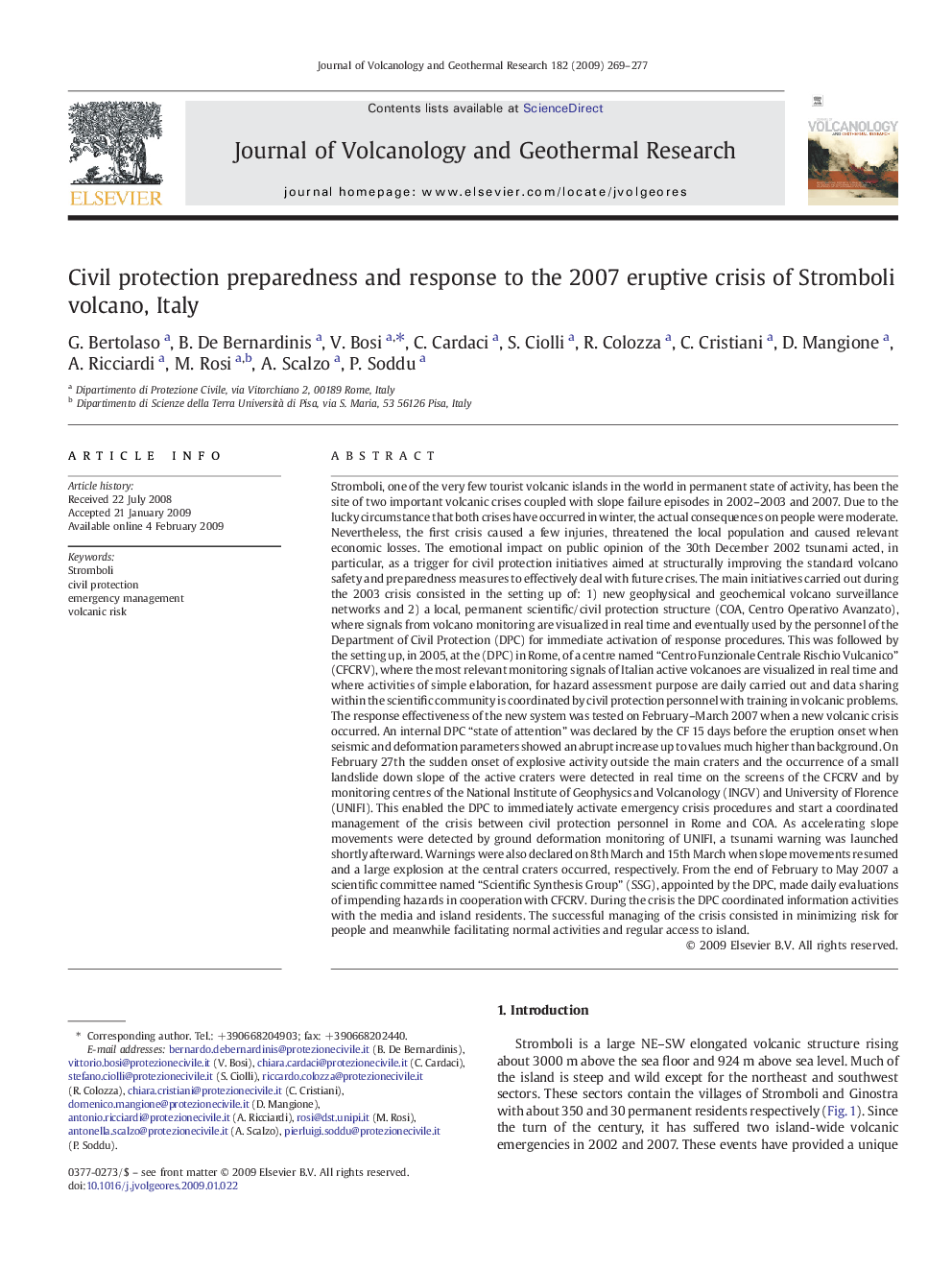| کد مقاله | کد نشریه | سال انتشار | مقاله انگلیسی | نسخه تمام متن |
|---|---|---|---|---|
| 4714221 | 1638438 | 2009 | 9 صفحه PDF | دانلود رایگان |

Stromboli, one of the very few tourist volcanic islands in the world in permanent state of activity, has been the site of two important volcanic crises coupled with slope failure episodes in 2002–2003 and 2007. Due to the lucky circumstance that both crises have occurred in winter, the actual consequences on people were moderate. Nevertheless, the first crisis caused a few injuries, threatened the local population and caused relevant economic losses. The emotional impact on public opinion of the 30th December 2002 tsunami acted, in particular, as a trigger for civil protection initiatives aimed at structurally improving the standard volcano safety and preparedness measures to effectively deal with future crises. The main initiatives carried out during the 2003 crisis consisted in the setting up of: 1) new geophysical and geochemical volcano surveillance networks and 2) a local, permanent scientific/civil protection structure (COA, Centro Operativo Avanzato), where signals from volcano monitoring are visualized in real time and eventually used by the personnel of the Department of Civil Protection (DPC) for immediate activation of response procedures. This was followed by the setting up, in 2005, at the (DPC) in Rome, of a centre named “Centro Funzionale Centrale Rischio Vulcanico” (CFCRV), where the most relevant monitoring signals of Italian active volcanoes are visualized in real time and where activities of simple elaboration, for hazard assessment purpose are daily carried out and data sharing within the scientific community is coordinated by civil protection personnel with training in volcanic problems.The response effectiveness of the new system was tested on February–March 2007 when a new volcanic crisis occurred. An internal DPC “state of attention” was declared by the CF 15 days before the eruption onset when seismic and deformation parameters showed an abrupt increase up to values much higher than background. On February 27th the sudden onset of explosive activity outside the main craters and the occurrence of a small landslide down slope of the active craters were detected in real time on the screens of the CFCRV and by monitoring centres of the National Institute of Geophysics and Volcanology (INGV) and University of Florence (UNIFI). This enabled the DPC to immediately activate emergency crisis procedures and start a coordinated management of the crisis between civil protection personnel in Rome and COA. As accelerating slope movements were detected by ground deformation monitoring of UNIFI, a tsunami warning was launched shortly afterward. Warnings were also declared on 8th March and 15th March when slope movements resumed and a large explosion at the central craters occurred, respectively. From the end of February to May 2007 a scientific committee named “Scientific Synthesis Group” (SSG), appointed by the DPC, made daily evaluations of impending hazards in cooperation with CFCRV. During the crisis the DPC coordinated information activities with the media and island residents. The successful managing of the crisis consisted in minimizing risk for people and meanwhile facilitating normal activities and regular access to island.
Journal: Journal of Volcanology and Geothermal Research - Volume 182, Issues 3–4, 10 May 2009, Pages 269–277